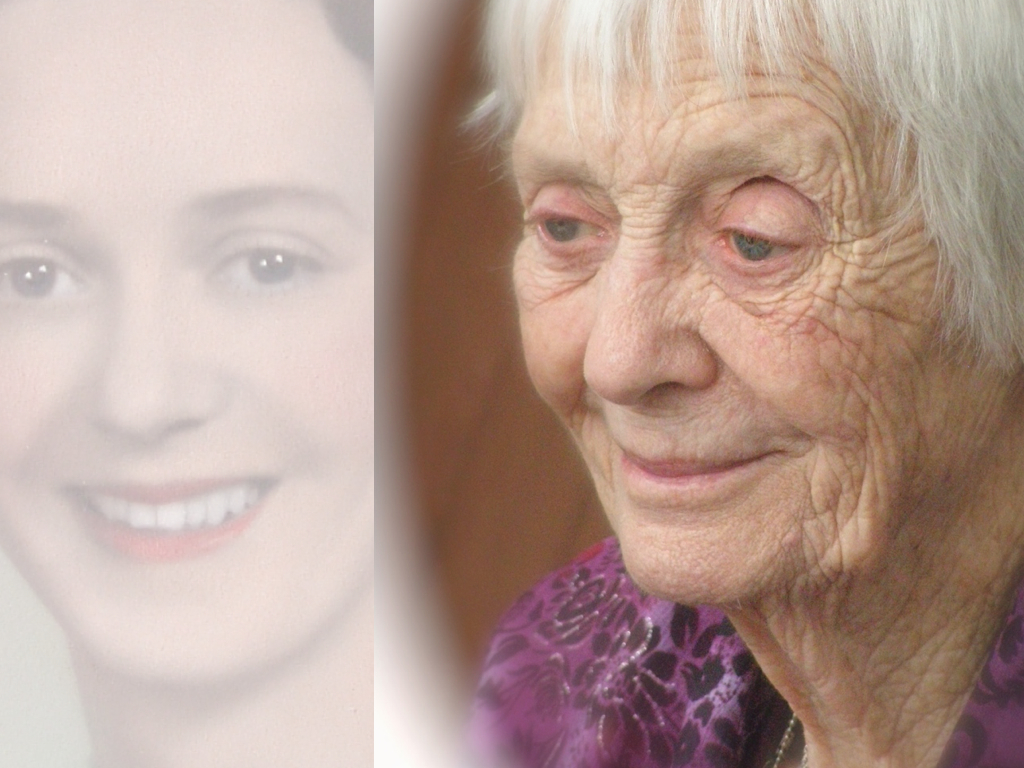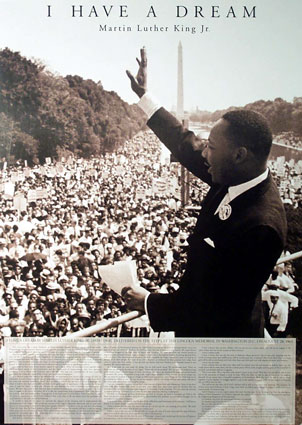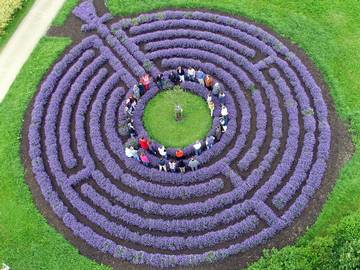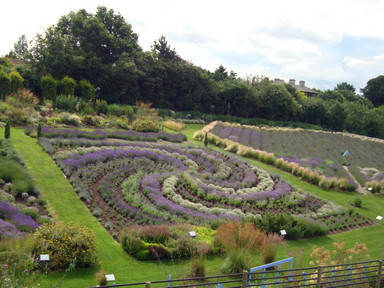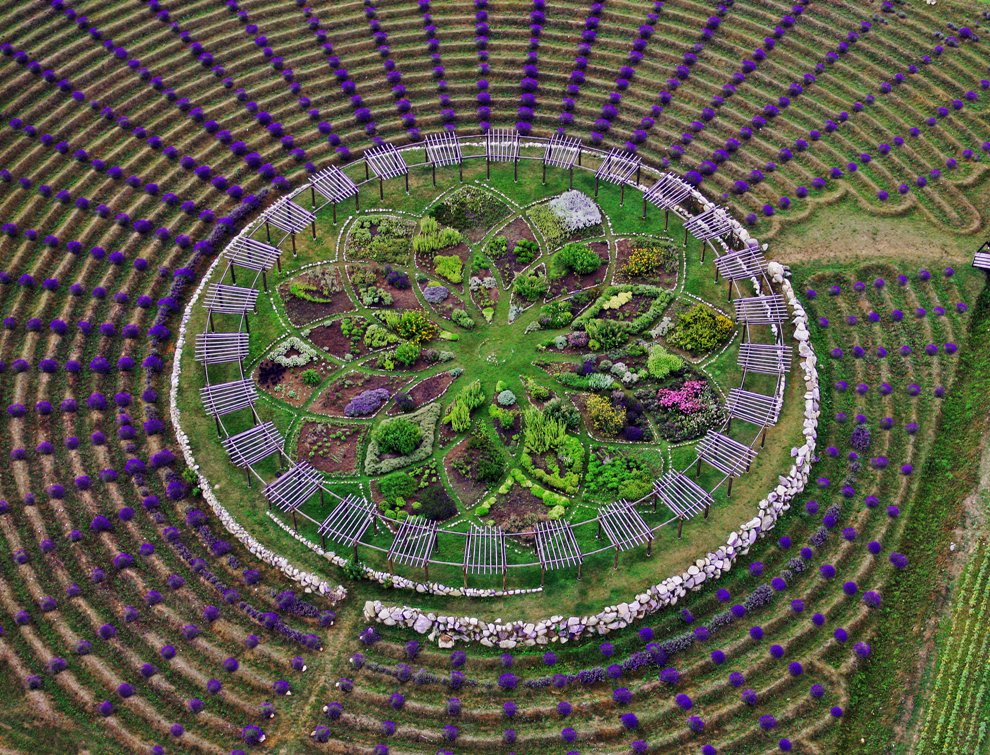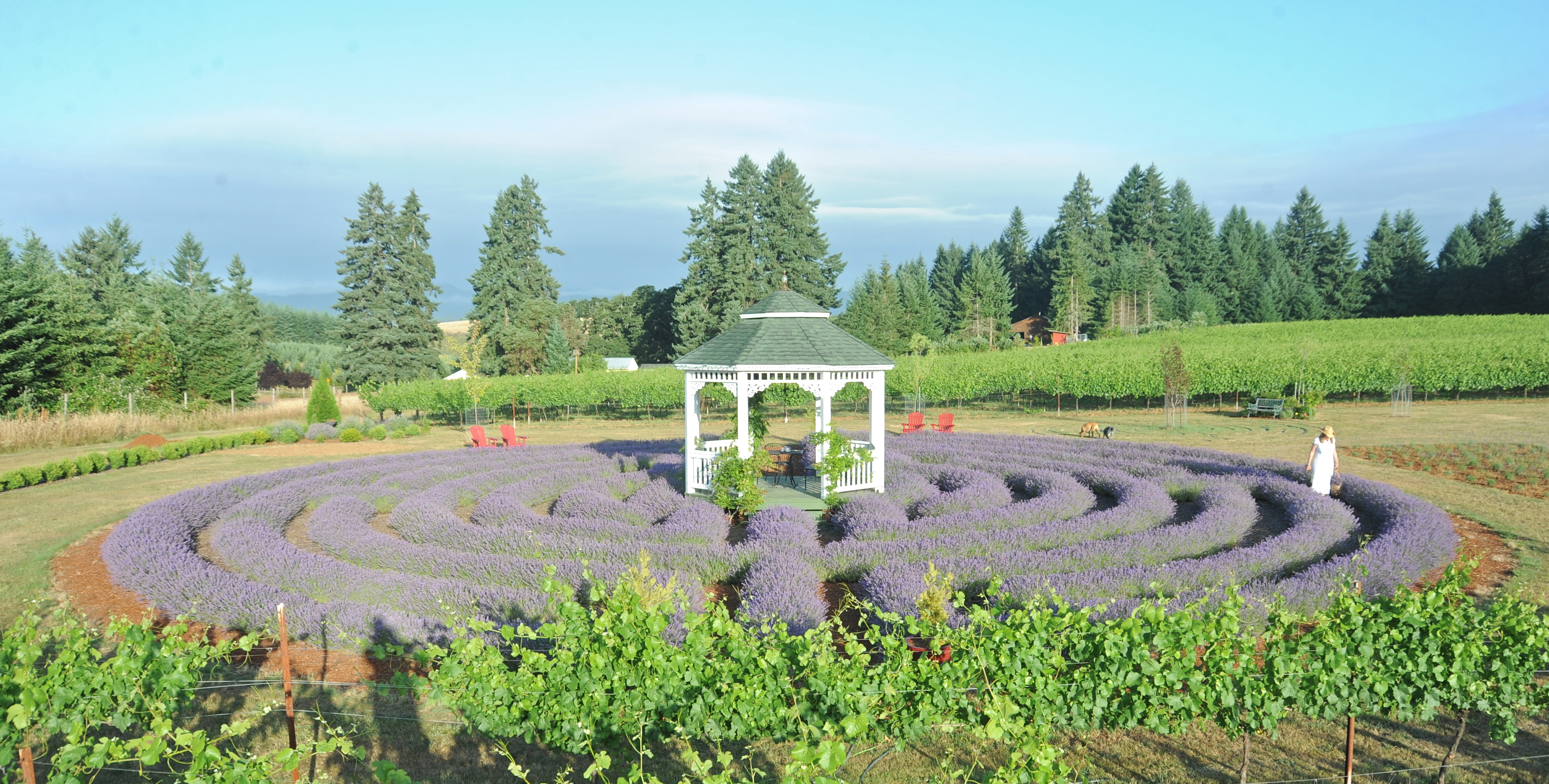It is just over two weeks since my mother died and I am back in Seattle feeling somewhat normal and re-anchored. This is a time of reevaluation for me. One friend wisely commented
No matter our age, I think the passing of our mothers awakens a new life stage for us.
I think she is right. Some things will never be the same again. And in the midst of the ache in my heart, I find myself rethinking my own life and its priorities. I continue to read the book In Search of Sacred Places, which I was reading aloud to my mother in her last few days. It has some great insights for me at this stage. In talking about the Celtic saints who died at the hands of the viking raiders Daniel Taylor comments:
If they were to die, they hoped to do so fully recognized for what they were. (p129)
He goes on to ask the challenging question:
how willing am I to organize my own life and actions and relationships around those spiritual truths that I claim should define every life? How eager am I to be fully recognized? (p130)
For the Celtic saints, all of life was organized in light of spiritual realities. Daily life was an ordered rhythm of worship, work, and study – all as an offering to God.
I am not sure that I can say the same for my own life. We follow a God who was not afraid to suffer and die to draw us close. We adhere to a faith that found its home among the poor and the outcast. It was spread initially by persecution. and rejection, yet we want none of that.
Early Christians were not afraid to be fully recognized, even if it meant their death. Yet for us faith is often a benign and comfortable value, “useful for food drives and homeless shelters, but ugly and even dangerous when it publicly asserts its claims as truth. ” (p129)
I want, in this season of my life to be fully recognized for my faith, not just for I what I say but for how I live out every aspect of my life. I want my purposes to become more aligned with God’s purposes. I want the rhythm of my life to more closely follow a Godly rhythm and I want my actions to more fully proclaim the values and culture of God’s eternal world.
Will you join me on this pilgrim path so that together we may all be fully recognized as the caring, compassionate, generous, life giving people that God intends us to be?
Wednesday marks the 50th anniversary of Martin Luther King’s famous I Have A Dream speech. So often we sanitize the speech, editing it down to a few small quotes that don’t cause any discomfort or disturbance to our way of life. But there is far more to Martin Luther’s speech than that. I reflected on this on Matin Luther King Day this last January in my post Let Us Do What is Right
but wanted to remind us of this auspicious day and implications this week too.
Read through this quote and then the short liturgy that follows. Think about the places you know of where this dream is still unrealized. What can you do to change this?
I have a dream that one day this nation will rise up and live out the true meaning of its creed: “We hold these truths to be self-evident: that all men are created equal.” I have a dream that one day on the red hills of Georgia the sons of former slaves and the sons of former slaveowners will be able to sit down together at a table of brotherhood. I have a dream that one day even the state of Mississippi, a desert state, sweltering with the heat of injustice and oppression, will be transformed into an oasis of freedom and justice. I have a dream that my four children will one day live in a nation where they will not be judged by the color of their skin but by the content of their character. I have a dream today.
I have a dream that one day the state of Alabama, whose governor’s lips are presently dripping with the words of interposition and nullification, will be transformed into a situation where little black boys and black girls will be able to join hands with little white boys and white girls and walk together as sisters and brothers. I have a dream today. I have a dream that one day every valley shall be exalted, every hill and mountain shall be made low, the rough places will be made plain, and the crooked places will be made straight, and the glory of the Lord shall be revealed, and all flesh shall see it together. This is our hope. This is the faith with which I return to the South. With this faith we will be able to hew out of the mountain of despair a stone of hope. With this faith we will be able to transform the jangling discords of our nation into a beautiful symphony of brotherhood. With this faith we will be able to work together, to pray together, to struggle together, to go to jail together, to stand up for freedom together, knowing that we will be free one day.
This will be the day when all of God’s children will be able to sing with a new meaning, “My country, ’tis of thee, sweet land of liberty, of thee I sing. Land where my fathers died, land of the pilgrim’s pride, from every mountainside, let freedom ring.” And if America is to be a great nation, this must become true. So let freedom ring from the prodigious hilltops of New Hampshire. Let freedom ring from the mighty mountains of New York. Let freedom ring from the heightening Alleghenies of Pennsylvania! Let freedom ring from the snowcapped Rockies of Colorado! Let freedom ring from the curvaceous peaks of California! But not only that; let freedom ring from Stone Mountain of Georgia! Let freedom ring from Lookout Mountain of Tennessee! Let freedom ring from every hill and every molehill of Mississippi. From every mountainside, let freedom ring.
When we let freedom ring, when we let it ring from every village and every hamlet, from every state and every city, we will be able to speed up that day when all of God’s children, black men and white men, Jews and Gentiles, Protestants and Catholics, will be able to join hands and sing in the words of the old Negro spiritual, “Free at last! free at last! thank God Almighty, we are free at last!”
May we dream of a world made new,
Where together we shout for justice,
And as one we fight against oppression.
May we dream of a world made new,
Where together we seek God’s righteousness
And as one we sing God’s praise.
May we dream of a world made new,
Where together we climb God’s mountain,
And as one we enter the promised land.
May we dream of a world made new,
Where together we proclaim the good news of God’s kingdom,
And as one we enjoy its peace, and abundance and love.
(Adapted from Psalm 72:1-10, & Amos 5:24)
God let your justice and fairness flow like a river that never runs dry
Please help those of us who are rich to be honest and fair just like you, our God.
May we who have such abundance be honest and fair with all your people, especially the poor.
Let peace and justice rule every mountain and fairness flow as a river that never runs dry.
God let your justice and fairness flow like a river that never runs dry
May we your people defend the poor, rescue the homeless, and crush everyone who hurts them.
May we be as helpful as rain that refreshes the ground, to those who are treated unjustly.
Let the wholeness and fairness of your kingdom live forever like the sun and the moon.
God let your justice and fairness flow like a river that never runs dry
Because you our God rescue the homeless and have pity on those who hurt
May we who are rich stand up for the poor and let peace abound until the moon fades to nothing.
Let God’s kingdom of justice and fairness reach from sea to sea, across all the earth.
God let your justice and fairness flow like a river that never runs dry
Amen.
I love the combination of walking and fragrance. Probably my favourite combination is lavender and labyrinths. I talked about labyrinths in a previous post and in my recent book Return to Our Senses. Recently I have discovered a number of such labyrinths that I thought you might enjoy.
A couple of years ago I posted this beautiful photo of a lavender labyrinth in Kastellaun Germany.
This one in Yorkshire England
This at Cherry Point Farm Michigan
And this one at Tebri Vineyards in Oregon
And yet another from Latitudes of Lavender also in Oregon
And if you are looking for some good music to aid your meditation while labyrinth walking, consider this beautiful music by Hildegard von Bingen
Here is the liturgy for the second session of the Celtic retreat. This was written by Ryan Marsh of Church of the Beloved. You might also like to check out the reflections that have already been written by participants following the retreat. Pinholes and Paradigms by Lisa San Martin and Where is Freedom and The Shout by Gil George.
Evening Gathering – Eucharist
Opening Responses
ONE: Peace on each one who comes in need
Peace on each one who comes in joy
TWO: Peace on each who offers prayers
Peace on each who offers song
THREE: Peace of the Maker, Peace of the Son
Peace of the Spirit, the Triune One
Song : Come Thou Fount
A New Song : Psalm 98
ONE: O sing to the Lord a new song,
for he has done marvelous things.
His right hand and his holy arm
have gotten him victory.
TWO: The Lord has made known his victory;
he has revealed his vindication in the sight of the nations.
He has remembered his steadfast love and faithfulness
to the house of Israel.
THREE: All the ends of the earth have seen
the victory of our God.
Make a joyful noise to the Lord, all the earth;
break forth into joyous song and sing praises.
ONE: Sing praises to the Lord with the lyre,
with the lyre and the sound of melody.
With trumpets and the sound of the horn
make a joyful noise before the King, the Lord.
TWO: Let the sea roar, and all that fills it;
the world and those who live in it.
Let the floods clap their hands;
let the hills sing together for joy
THREE: Sing in the presence of the Lord, for he is coming
to judge the earth.
He will judge the world with righteousness,
and the peoples with equity.
Set Sail: St. Brendan Meditation
ONE: St Brendan the Navigator set sail with a group of Monks from the Dingle peninsula in a small boat called a currach in search of the Isle of the Blessed. There are many spectacular myths and legends that surround their voyage. They are said to have visited the northern Isles of Scotland, the Faeroe islands, Iceland and eventually Newfoundland. Many years later they returned home with flora and fauna that was neither Irish, nor European. What we know for certain is that they drifted free at the mercy of the wind and the whim of the waves, in the will of God.
TWO: Picture yourself in the place of Brendan… staring across the ocean toward the horizon, the edge of your known world, into the unknown. Maybe there are distant lands across the sea, maybe there is nothing, only God knows! See yourself standing at the wooden jetty, in front of you a feeble looking boat, made of unseasoned wood and leather, smeared in animal grease to seal it from the waves. In the bottom of the craft there lies a roll of leather, there to patch the unavoidable leaks and tears. The boat continuously slams into the jetty bruising the leather as the swell of the great western ocean throws it around. Who knows, maybe the waves themselves are returning from those far off shores, shores which at this time are simply a glimpse of the possible, a dream of what might be out there beyond the horizon.
Deep inside you hear a call that says – “SET SAIL”,
THREE: A secret voice heard only in your heart, “SET SAIL INTO THE UNKNOWN”,
TWO: A stirring on the edge of the wind “SET SAIL INTO THE UNKNOWN, STEP OFF THE EDGE OF YOUR WORLD”,
ONE: An echo of stones dragged along the beach by the tide “SET SAIL INTO THE UNKNOWN, STEP OFF THE EDGE OF YOUR WORLD, COME WITH ME INTO MINE”
TWO: What are the moorings in your life? Not the things that frustrate you, but the things you hold on to. The comforts which you cling to, the insecurities which cloud your willingness to go into the unknown… to SET SAIL.
THREE: What are your dreams, the dreams which seem far too distant and unreachable. What are the visions you have that feel beyond your grasp, too vast? What are the big ideas which leave you stumped, no idea of how to even start. Strain for them, reach for them, go for them… SET SAIL.
TWO: What does it feel like to truly abandon the shore? To leave behind Models and Strategies, to ignore the speculation of Maps and Guides, to cut oneself adrift from techniques and practices, to place yourself beyond the horizon, no turning back? No clutching to tried and tested solutions or the words of experts, to put yourself solely in the hands of God… to SET SAIL.
ONE: Brendan put himself at the mercy of the wind, at the whim of the waves in the will of God. What would it mean to drift in the Missio Dei, the mission of God? What would it mean to go beyond the horizon of your own knowledge, experience and ideas, to put your faith in the beckoning Christ… what would it mean for you to really SET SAIL?
St. Brendan’s Prayer
TWO: Brendan left us with the prayer he prayed before setting sail. It’s a glimpse into the heart of faith.
Together, let us pray the prayer of St. Brendan,
Shall I abandon, O King of mysteries, the soft comforts of home?
Shall I turn my back on my native land,
and turn my face towards the sea?
Shall I put myself wholly at your mercy,
without silver or horse, without fame or honor?
Shall I throw myself wholly upon You,
without sword and shield,
without food and drink,
without a bed to lie on?
Shall I say farewell to my beautiful land, placing myself under Your yoke?
Shall I pour out my heart to You,
confessing my manifold sins and begging forgiveness,
tears streaming down my cheeks?
Shall I leave the prints of my knees on the sandy beach,
a record of my final prayer in my native land?
Shall I then suffer every kind of wound that the sea can inflict?
Shall I take my tiny boat across the wide sparkling ocean?
O King of the Glorious Heaven,
shall I go of my own choice upon the sea?
O Christ, will You help me on the wild waves?
Dressing the Altar
THREE: We are ready to set sail. This morning we placed objects on the altar as symbols of that setting sail. But the day has taught us new things, given us new companions, stirred within us a new sense of the journey God calls us to. What are the new things you take with you today as preparation for the journey ahead? (Time to share – kids first, then youth, then adults)
Chant : All Things New
Eucharist
RYAN: The Lord be with you
And also with you
RYAN: Lift up your hearts
We lift them up to the Lord
RYAN: Let us give thanks to the Lord our God
It is right to give God thanks and praise
RYAN: The day St. Brendan and the monks embarked, they set sail towards the summer solstice. They had a fair wind, and therefore no labour, only to keep the sails properly set; but after twelve days the wind fell to a dead calm, and they had to labour at the oars until their strength was nearly exhausted. Then St Brendan would encourage and exhort them: ‘Fear not, brothers, for our God will be unto us a helper, a mariner, and a pilot; take in the oars and helm, keep the sails set, and may God do unto us, His servants and His little vessel, as He wills’. They took refreshment always in the evening, and sometimes a wind sprung up; but they knew not from what point it blew, nor in what direction they were sailing.
So we do here tonight what those monks of St. Brendan did in the boat every evening of their long voyage. Like them, we need strength for the journey and God makes a table for us in every place.
So we do here tonight what Jesus did in an upstairs room… [Words of Institution]
Jesus promises to always travel with us, guides us, sustains us, surrounds us. Wild Wind of the Spirit, Come! And open our ears to your call. Come and open our eyes to your presence. Come and open our hearts to your love, So that we might surrender ourselves into your hands without fear, but with a simple trust, ready for all, accepting all, welcoming all. Here we are Lord, feed us and send us on. Amen.
Communion Song: My Hope Is Built
Sending Prayer
ONE: As we go we will not refuse any destination:
For wild blows the wind of the spirit.
TWO: As we go we will embrace all that crosses our way:
For wild blows the wind of the spirit.
THREE: As we go we will open our hearts to the good in all creation, despite our reservations:
For wild blows the wind of the spirit.
ONE: As we go we will hold close to your Word and give all to you:
For wild blows the wind of the spirit.
TWO: As we go we will not be bound by our weaknesses nor limited by our strengths:
For wild blows the wind of the spirit.
THREE: As we go we will see each struggle as a place of learning:
For wild blows the wind of the spirit.
ONE: As we go we will welcome any companion who wishes to journey with us:
For wild blows the wind of the spirit.
TWO: As we go we will not predict or plan for rigid outcomes,
THREE: but will relish all of the surprises and take the greatest risks:
For wild blows the wind of the spirit.
Blessing
RYAN: Bless to us, o God,
the moon rising above us
the Earth firm below us
the Friends gathered around us
and your image deep within us.
Amen.
CELTIC RETREAT MORNING GATHERING
[Three Readers are needed for this liturgy.]
A Vision of the New : Revelation 21v1-5
ONE: Then I saw
a new heaven and a new earth;
for the first “heaven” and the first “earth” had passed away,
and the “sea” was no more.
TWO: And I saw
the holy city, the new Jerusalem,
coming down out of heaven from God,
prepared as a bride adorned for her husband.
THREE: And I heard
a loud voice from the throne saying,
“See, the home of God is among mortals.
He will dwell with them;
they will be his peoples,
and God himself will be with them;
he will wipe every tear from their eyes.
Death will be no more;
mourning and crying and pain will be no more,
for the first things have passed away.”
ONE: And the one who was seated on the throne said,
“See, I am making all things new.”
Call to Worship – Peruvian Gloria
Invocation
ONE: The Maker of Heaven and Earth is with us
Glory to the Maker of Heaven and Earth
TWO: The Son of Mary is with us
Glory to the Son of Mary
THREE: The wild and wonderful Spirit is with us
Glory to the wild and wonderful Spirit
ONE/TWO/THREE: We gather in the name of the Holy Three
Amen!
Introduction
ONE: When author Paulo Coehlo wrote, “a ship is safest in port, but that’s not what ships were made for”, he wasn’t the first to say it, and he definitely wasn’t the first to feel it, because deep down we all know that we were made for more than simply a lifetime of playing it safe. Deep down we all know that we were made for a lifetime of adventure and mission and the invigorating, yet terrifying risk of the open and unknown sea of God’s new future.
TWO: And this brings us to this weekend’s patron saint. Brendan was a 6th century Irish monk. He is probably best known for his heroic voyage to find the mythic Isle of the Blessed. The stories about his sail across the uncharted Atlantic Ocean in a small wooden craft with 14 other monks became some of the most popular and enduring medieval legends. In modern terms, St. Brendan was likely clinically disturbed in his obsession with finding this new thing to which God was calling him. He was willing to risk everything.
THREE: Certainly God is doing something new here on this land that is so pregnant with possibility. After years of dreaming and hoping, we can finally see posts rising out of the ground; a framework growing into what’s to come. Certainly God is doing something new within you. In the words of the prophet, “God is about to do something. Something you’ve never seen, heard or thought of before. Can you see it yet?” Or do you need to be disturbed first?
Prayer of Sir Francis Drake
ONE: Let us pray with the words of English sea captain Sir Francis Drake:
Disturb us, Lord,
When we are too well pleased with ourselves,
When our dreams have come true
Because we have dreamed too little,
When we arrived safely
Because we sailed too close to the shore.
TWO: Disturb us, Lord, when
With the abundance of things we possess
We have lost our thirst
For the waters of life;
Having fallen in love with life,
We have ceased to dream of eternity
And in our efforts to build a new earth,
We have allowed our vision
Of the new Heaven to dim.
THREE: Disturb us, Lord, to dare more boldly,
To venture on wider seas
Where storms will show your mastery;
Where losing sight of land,
We shall find the stars.
We ask You to push back
The horizons of our hopes;
And to push into the future
In strength, courage, hope, and love.
Amen.
Chant : All Things New
The Prophetic Voice : Isaiah 42v5-9
TWO: This is what God says, the Lord,
who created the heavens and stretched them out,
who spread out the earth and what comes from it,
who gives breath to the people upon it
and spirit to those who walk in it:
“I am the Lord, I have called you in righteousness,
I have taken you by the hand and kept you;
I have given you as a covenant to the people,
a light to the nations,
to open the eyes that are blind,
to bring out the prisoners from the dungeon,
from the prison those who sit in darkness.
I am the Lord, that is my name;
my glory I give to no other,
nor my praise to idols.
See, the former things have come to pass,
and new things I now declare;
before they spring forth,
I tell you of them.”
Listening SIlence
THREE: In this nature sanctuary let us take time to listen for the still soft voice of God. [2 minutes silence]
Dressing the Altar
THREE: What is the new direction, undiscovered future, the holy voyage that God is calling you to? – Think of all the things you might leave behind for this new land? – Think of all the risks that might be involved in setting sail? – Think of those who might be in the same boat with you.
– Think of the calling that wont stop calling you.
Keep these questions within you as you walk. Search for an object in nature that might be a symbol of your setting sail. Bring it back to set on the altar as we begin our day (10 minutes to walk and find an object.
Song: Be Thou My Vision
An invitation to Lectio Divina.
God something new is emerging,
Something new is being birthed,
In our lives, in our world and through our faith.
God may we journey with patience and hope towards your newness,
Willing to walk on paths unknown,
That you have marked out with loving care.
May we wait in trust and not fear for your new world,
For the justice and peace and freedom that has been promised,
For those things hoped for and not yet seen.
Knowing that the journey belongs to you
And our future is in your hands.
Chant : All Things New
Wish I was at the Celtic retreat today where they will be finishing with this liturgy. I am heading home to Seattle from Sydney instead. Lots of memories, lots of tears, much to remember and think about.
As an Amazon Associate, I receive a small amount for purchases made through appropriate links.
Thank you for supporting Godspace in this way.
When referencing or quoting Godspace Light, please be sure to include the Author (Christine Sine unless otherwise noted), the Title of the article or resource, the Source link where appropriate, and ©Godspacelight.com. Thank you!

